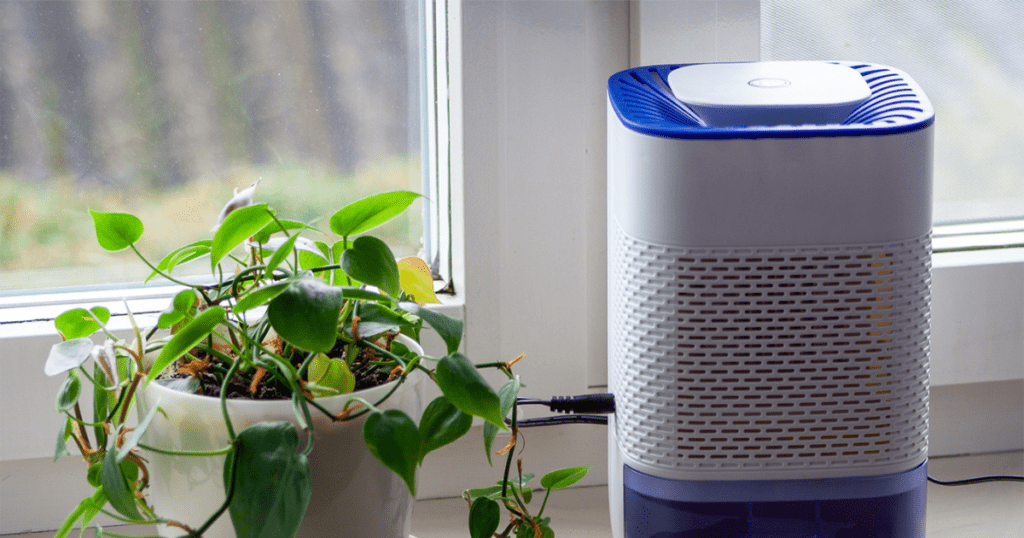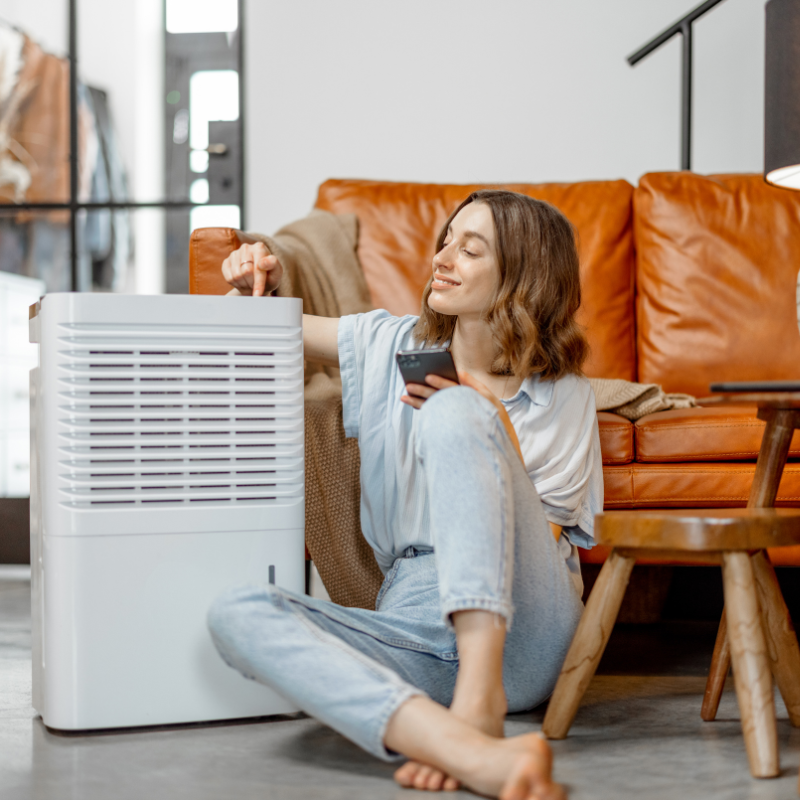
Ever felt that weird, uncomfortable feeling in a room? Blame it on humidity, the amount of moisture in the air. Globally, 40% of buildings have dampness or mold problems. While some humidity is good for us, too much can create problems like mold, allergies, and even damage to your home. Luckily, dehumidifiers can step in as your moisture control system, but are they always the magic solution? Let’s Know the dehumidifier Benefits, side effects, potential drawbacks, and the best ways to use them.
Table of Contents
The Good Side of Dehumidifiers
Imagine entering a room that feels fresh and airy instead of moldy and thick. That’s the magic of dehumidifiers! There are many options for the best dehumidifier for mold. Here’s how they work:
- Moisture: Like a cold surface attracting condensation, a dehumidifier’s core (either a cooled coil or desiccant wheel) removes excess moisture from the air.
- Air Flow: A fan pulls in humid air, passes it over the moisture magnet, and traps the excess water.
- Dry Air Release: The now drier air is often warmed (optional) and released back into the room, creating a more comfortable and healthy environment.
Dehumidifier Benefits Beyond Comfort
Dehumidifiers are more than just mood boosters. They offer a range of advantages:
- Mold and Mildew Control: High humidity is a breeding ground for these harmful organisms. Dehumidifiers reduce moisture, creating an environment less hospitable to them, and protecting your health and your home’s structure.
- Improved Air Quality: Dust mites and other allergens thrive in humid environments. Dehumidifiers help control these allergens, potentially easing allergy and asthma symptoms.
- Protects Belongings: Dampness can damage furniture, books, and electronics. By controlling humidity, dehumidifiers help prevent warping, cracking, and mildew growth on your precious belongings.
- Faster Laundry Drying: Struggling with damp clothes in humid weather? Dehumidifiers can speed up drying time, especially in basements or laundry rooms.
Potential Drawbacks to Consider
While there are many dehumidifier benefits, it’s important to be aware of potential downsides:
- Overly Dry Air: Running a dehumidifier for too long or at too high a setting can remove too much moisture, leading to dry skin, itchy eyes, and even cracks in furniture. Maintain a balanced humidity level (around 30-50%) for optimal comfort and health.
- Energy Consumption: Like any appliance, dehumidifiers use energy. Be mindful of energy efficiency ratings and avoid overuse to minimize your energy bill.
- Maintenance Needs: Regularly empty the water tank and clean the air filter according to the manufacturer’s instructions to ensure optimal performance and prevent mold growth within the unit.
When and How to Use a Dehumidifier
Dehumidifiers aren’t one-size-fits-all solutions and there’s no best dehumidifier for the house. Here’s a guide:
When: Consider a dehumidifier if you experience:
- Visible mold or mildew growth.
- Musty odors.
- Condensation on windows or walls.
- Difficulty drying laundry indoors.
- Allergy or asthma symptoms triggered by humidity
- Set the right humidity level: Aim for 30-50% for optimal comfort and health. Most dehumidifiers come with built-in humidistats for automatic control.
- Placement: Position the unit away from walls and furniture for optimal airflow.
- Maintenance: Empty the water tank regularly and clean the air filter according to the manufacturer’s instructions.
- Remember: Dehumidifiers are tools, not miracle workers. Address the source of excess moisture if possible, such as leaking pipes or poor ventilation. Consult a professional for serious mold issues or concerns about using a dehumidifier in specific health conditions.
Choosing the Best Dehumidifier for House

With so many models available, like industrial dehumidifiers, dehumidifiers for home, and desiccant dehumidifiers, consider these factors:
- Room size: Capacity matters! Get a unit powerful enough for your space.
- Features: Some models offer extras like built-in humidistats, timers, and air filters.
- Energy efficiency: Look for Energy Star-certified models for lower operating costs.
- Noise level: Consider noise levels if using the dehumidifier in a bedroom
In Conclusion
There are many Dehumidifier benefits for creating a healthier, more comfortable, and protected environment. However, understanding their potential drawbacks and using them wisely is crucial. Consider your needs, choose the right unit, and use it responsibly to reap the rewards of dehumidifying without creating new problems. If you have any query you can contact us.
FAQs
1. Does a dehumidifier help with allergies and asthma?
This FAQ targets a common reason people consider dehumidifiers. The answer likely addresses whether a dehumidifier reduces allergens like dust mites and if it can improve breathing for those with respiratory conditions.
2. Can using a dehumidifier be bad for my health?
While dehumidifiers offer benefits, they might also have drawbacks. This FAQ would address potential side effects like dry skin or worsened respiratory problems if the air gets too dry.
3. How do I know if I need a dehumidifier and what settings should I use?
This FAQ tackles the practicalities of using a dehumidifier. The ideal answer would cover signs of high humidity in a home, along with factors to consider when choosing and setting a dehumidifier for optimal results.

One Response